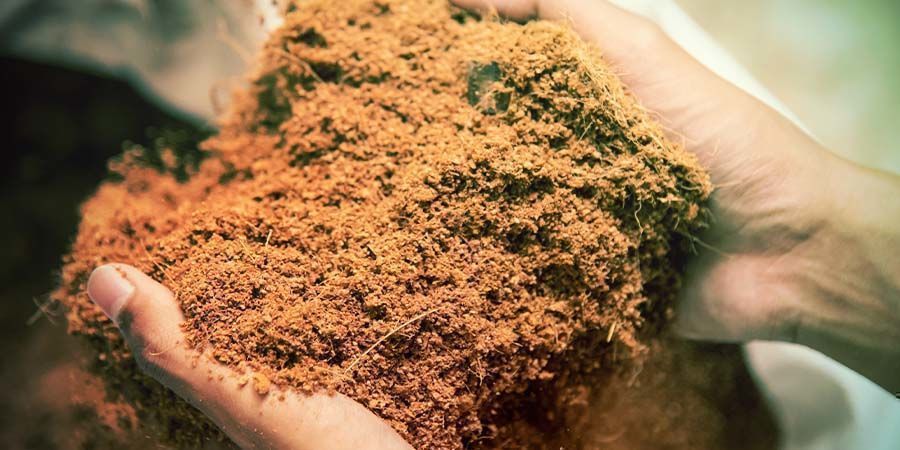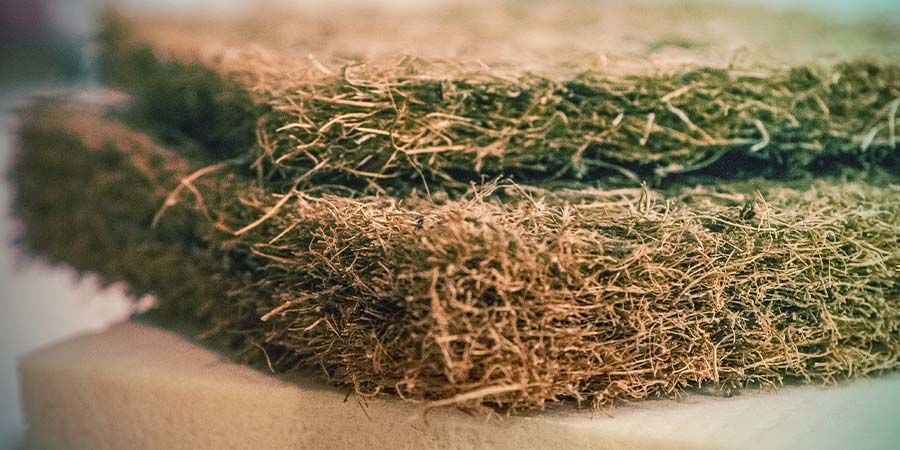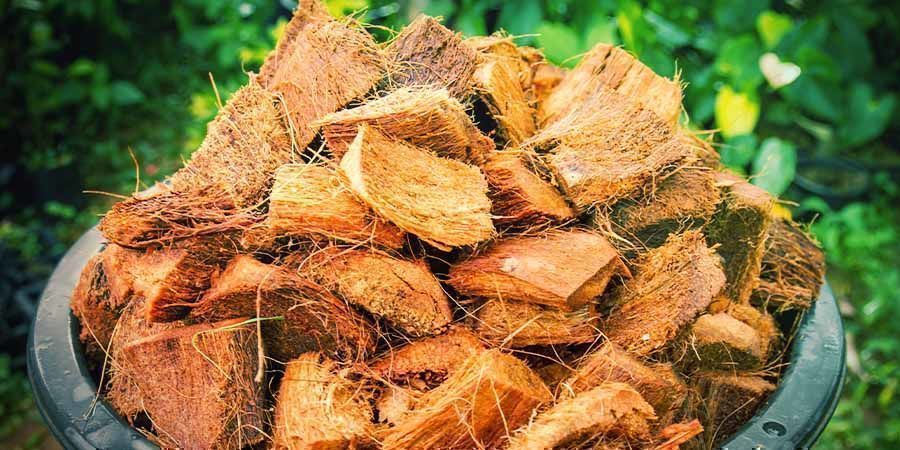Can You Reuse Coco Fibre?
Reusing coco fibre has its pros and cons. In this article, you'll get to know more about coco coir and the best practices to employ when attempting to reuse your coco fibre in future grows.
Especially for those with a green thumb, the idea of reusing coco coir may be of interest. While there are benefits to repurposing your stash of coco, there are also detrimental factors, which may play a large role in skipping this practice altogether.
Before proceeding with anything, you must be able to deeply understand what coco fibre is and how it can be used to your advantage. This blog should, at the very least, give you a firm grasp on what coco is and how to repurpose it.
WHAT IS COCO COIR?
If you are not familiar with coco coir or coco fibre, you may think that it is your run-of-the-mill soil. But whether it comes in a fine or coarse form, coco fibre is actually comprised of the fibrous husk of coconuts. Three horticultural products can be obtained from the husk: coir fibre, coir dust, and coir chips.
Because of the high amount of sodium ions and potassium naturally present in coco coir, it needs to undergo the process of buffering to make it more suitable for use. During buffering, the coco coir is soaked for up to 24 hours in a solution containing high levels of calcium. This process intends to displace excess sodium and balance the potassium levels.
After which, the coir is washed with water to further remove the displaced sodium, only leaving the calcium behind. The main objective of the buffering process is to avoid the presence of toxic levels of sodium, and to prevent the lockout of calcium and magnesium.
However, the process of buffering was not practiced during the early days of coco use in hydroponic grows. This resulted in catastrophic outcomes that sometimes culminated in the death of an entire crop.
THINGS TO CONSIDER BEFORE REUSING
Before you consider reusing coco coir, three important factors must first be addressed: structure, nutrient retention, and pathogen history.
 STRUCTURE
STRUCTURE
When it comes to structure, it is key to look at how the physical attributes of steamed, sterilised coco coir tend to deteriorate a lot quicker than its raw form. Especially for the washed and chemically-buffered coir, its miniature sponge-like structure tends to become smaller and deformed towards the end of its life cycle, which means that there is less space for air and a higher capacity for holding water.
This means that you must be careful when it comes to watering practices, especially after using the coir for short-cycle crops. For the 3rd and 4th cycle, 10-20% fresh coir or perlite may be required for a successful grow.
 NUTRIENT RETENTION
NUTRIENT RETENTION
When it comes to nutrient retention, buffered coco coir can be chemically stable throughout its lifespan. This is even more true with coco fibre that is buffered to complement its unique cation exchange properties.
This is why watering coco coir using a solution with low cation exchange capacity (CEC) will reduce the EC without taking off the buffer, as opposed to when plain water is used, which can cause chemical imbalances. But when low-EC rinse is used, coir tends to react quicker and requires fewer flushes compared to peat mixes.
 PATHOGEN HISTORY
PATHOGEN HISTORY
Pathogen history is an important aspect to consider when reusing coir to determine the crop’s overall condition and its likely reaction. Even trace amounts of pathogens can cause coco to be unfit for successfully cultivating cannabis. An example of this is Dutch elm disease, which essentially blocks the plant's water support system, causing it to wilt and eventually die out.
PREPARING THE COCO TO BE REUSED

There remains a debate on how long/how many times coco may be reused. Some argue that it can stand up to one year, which for short-cycle plants could be 3-4 crops. Others believe that coir can be reused more times than that, depending on the quality and steps taken to prepare the media.
In order to keep any other problems from arising, it is so important to tend to the coco that will be reused. The first step is to take out the dead cellulose, which can be found in root matter left over from previous plants. To do this, the coco must be broken up and passed through a .635cm soil sieve. From here, the larger roots can be removed and discarded.
Enzyme products such as Hygrozyme or Multi Zen can also be applied in the later stages of growth to clean up the residual decaying material. It is key not to leave dead roots in the media, as they can create a low oxygen or anaerobic environment.
After the root material has been discarded, the coco fibre must be washed using either a low EC nutrient solution or water. This practice aims to bring back the nutrient levels that were sucked out from the entire process.
REUSING COCO FIBRE: IT CAN BE DONE

To answer the question, yes, coco fibre can be reused, and doing so yields positive results. For one, it has been found that reusing coir brings out the beneficial microbes that are present in the media, particularly mycorrhizae and trichoderma. These components propagate higher potential for growth improvement over longer periods of time.
Growers have found that coco fibre is best when reused for a second or third time since a stable balance of ions on the cation exchange has already been developed. This in turn leads to a better root environment in future crops.
Overall, the reusing of coco is highly dependent on the grower’s discretion; but if anything, it can at least be utilised to improve the soil mix of outdoor plants.
-
 4 min
30 January 2023
Using Coffee Grounds As Cannabis Fertiliser
Not only great for the compost heap, coffee grounds could also be your secret weapon to achieving a healthy and robust cannabis crop. All it takes is a little know-how, and your plants will...
4 min
30 January 2023
Using Coffee Grounds As Cannabis Fertiliser
Not only great for the compost heap, coffee grounds could also be your secret weapon to achieving a healthy and robust cannabis crop. All it takes is a little know-how, and your plants will...
-
 6 min
5 September 2018
What Is Recycled Organic Living Soil (ROLS)
ROLS techniques allow you to create a self-sustaining soil biosphere in your garden. Save money on pesticides and fertilisers, improve the health of the environment, and enhance the quality of your...
6 min
5 September 2018
What Is Recycled Organic Living Soil (ROLS)
ROLS techniques allow you to create a self-sustaining soil biosphere in your garden. Save money on pesticides and fertilisers, improve the health of the environment, and enhance the quality of your...
-
 3 min
5 August 2018
Using Coconut Water As Organic Cannabis Fertiliser
Coconut water is an all-natural cannabis growth accelerator for organic and hydroponic growing systems. It boosts clone development, enhances root growth from seeds, and boosts overall plant...
3 min
5 August 2018
Using Coconut Water As Organic Cannabis Fertiliser
Coconut water is an all-natural cannabis growth accelerator for organic and hydroponic growing systems. It boosts clone development, enhances root growth from seeds, and boosts overall plant...









 United States
United States















